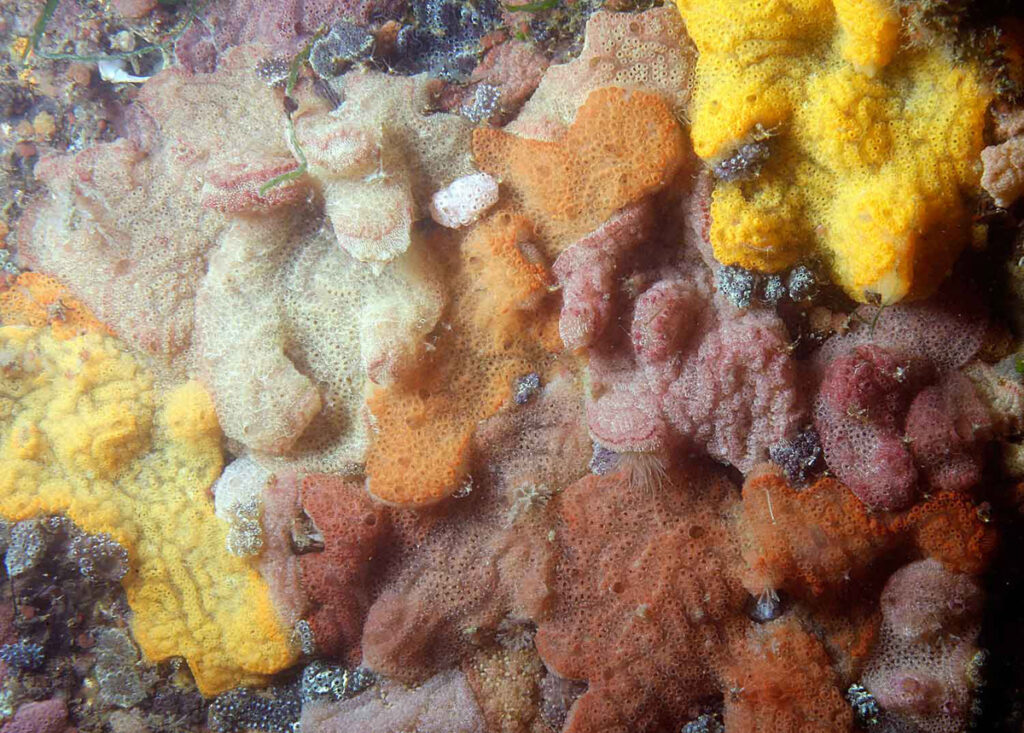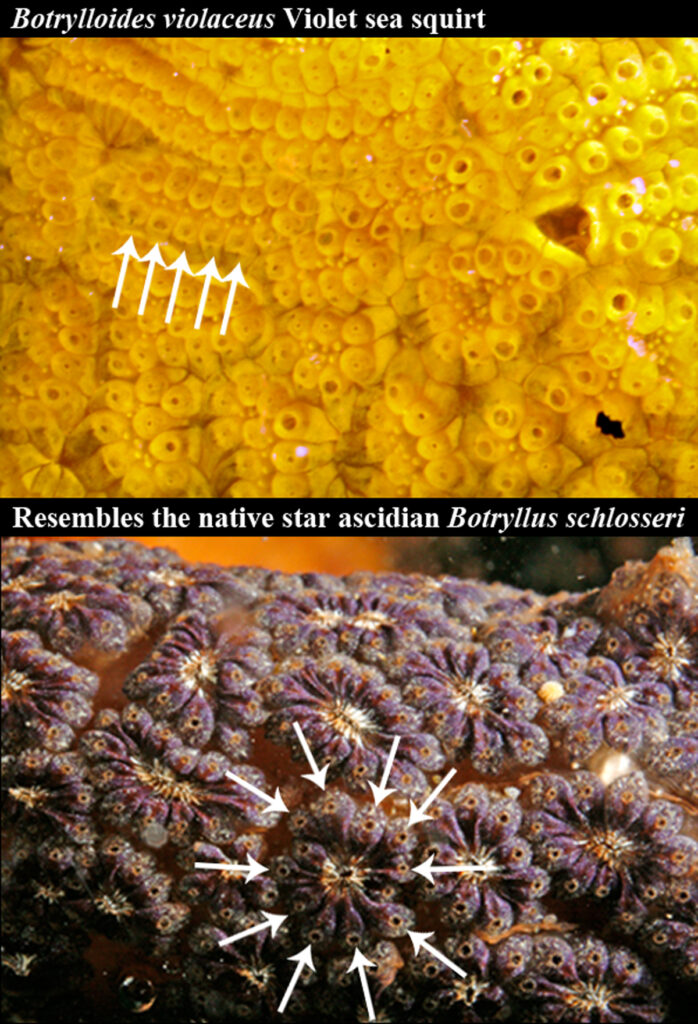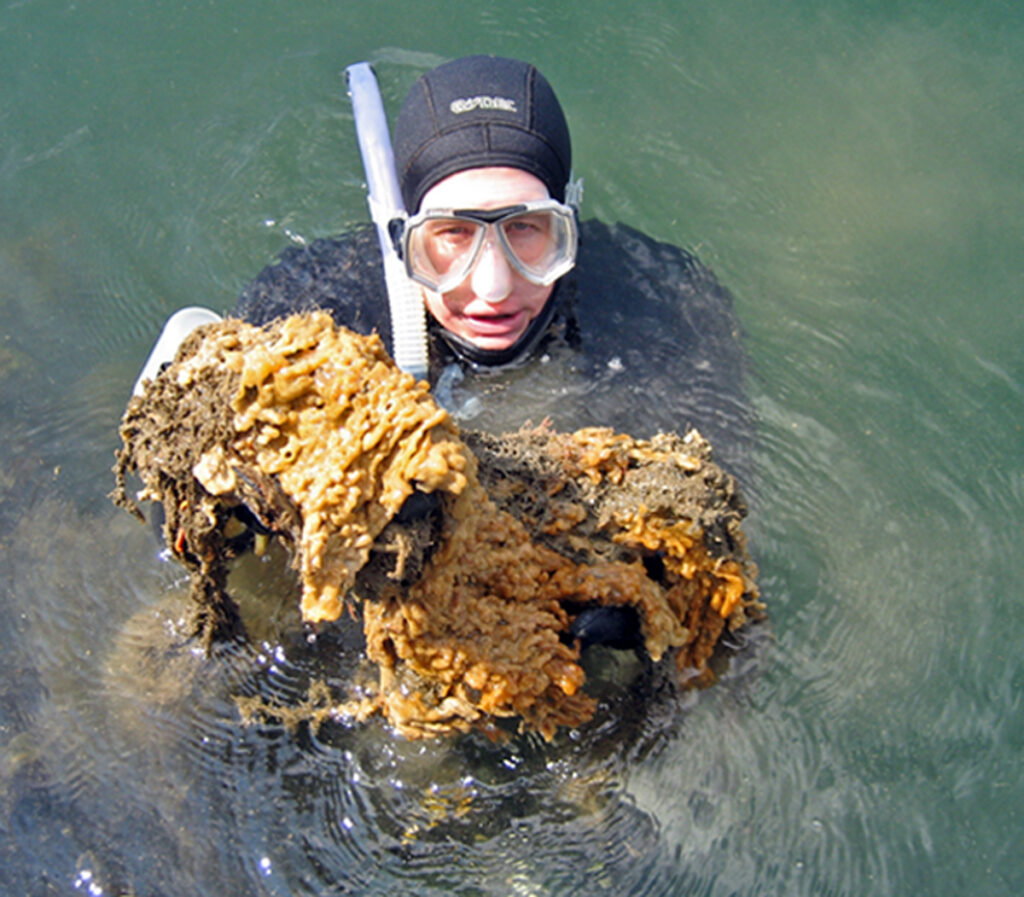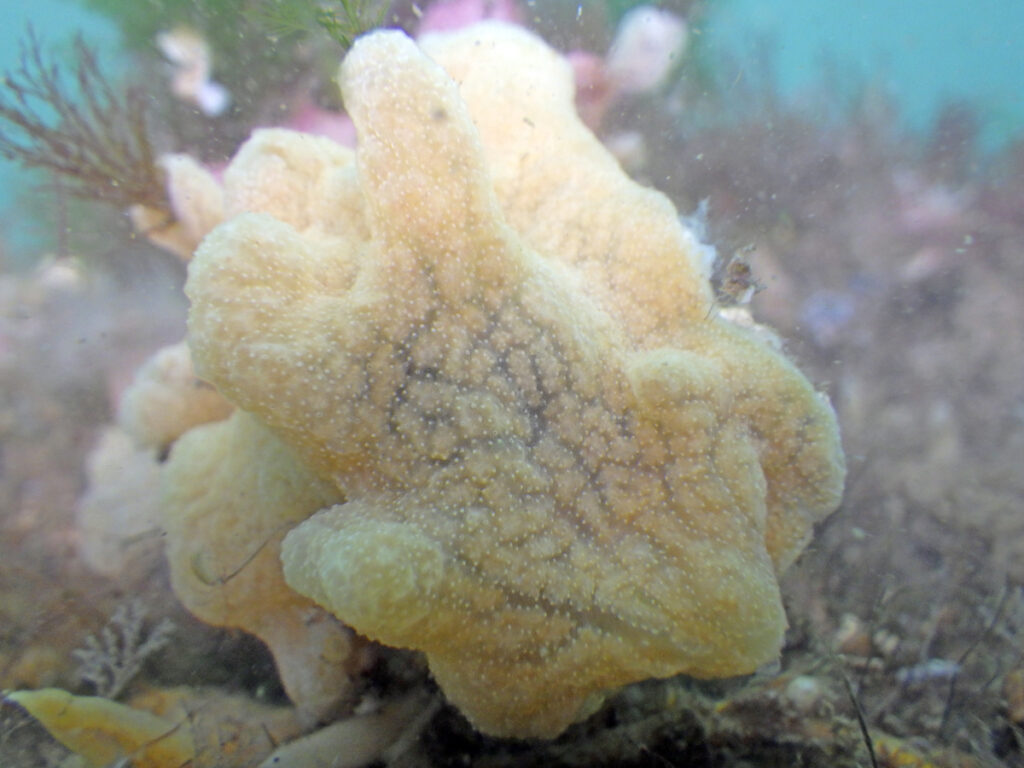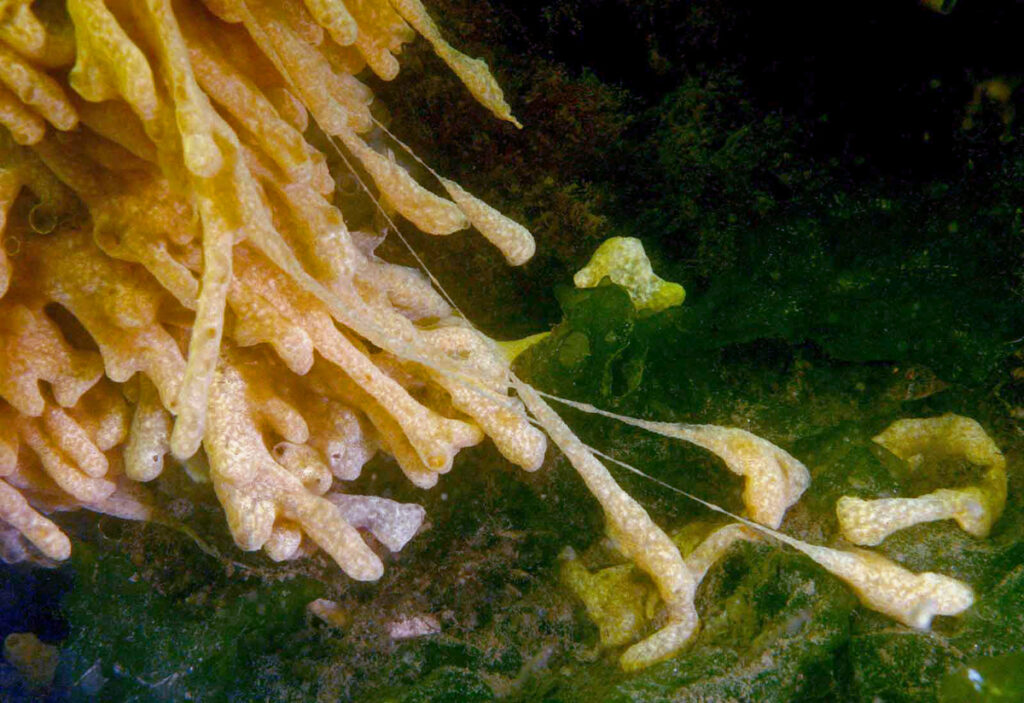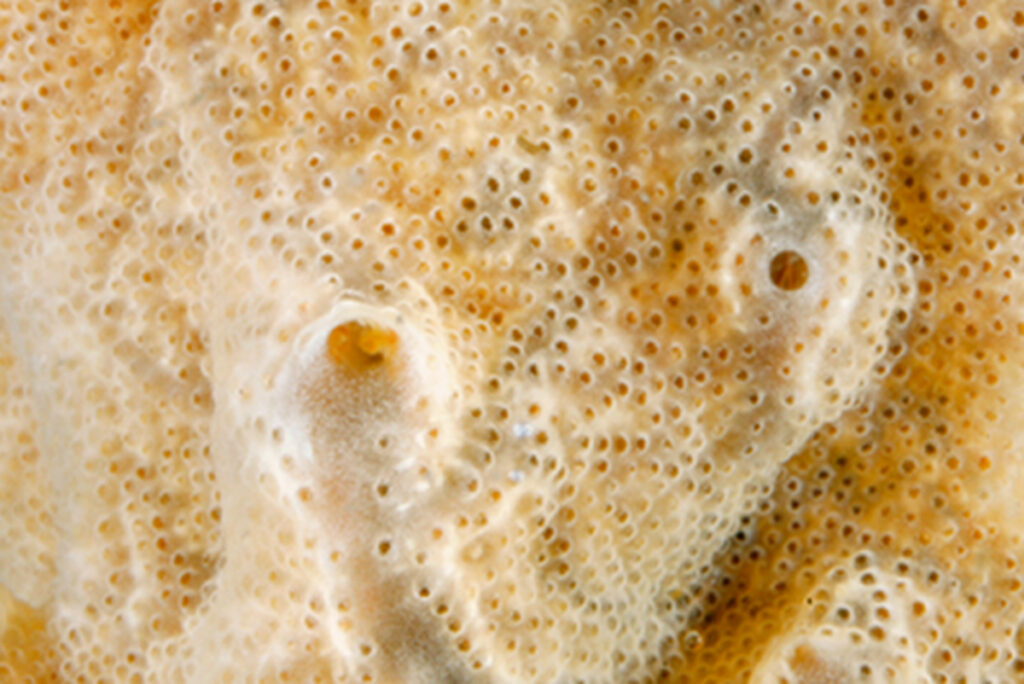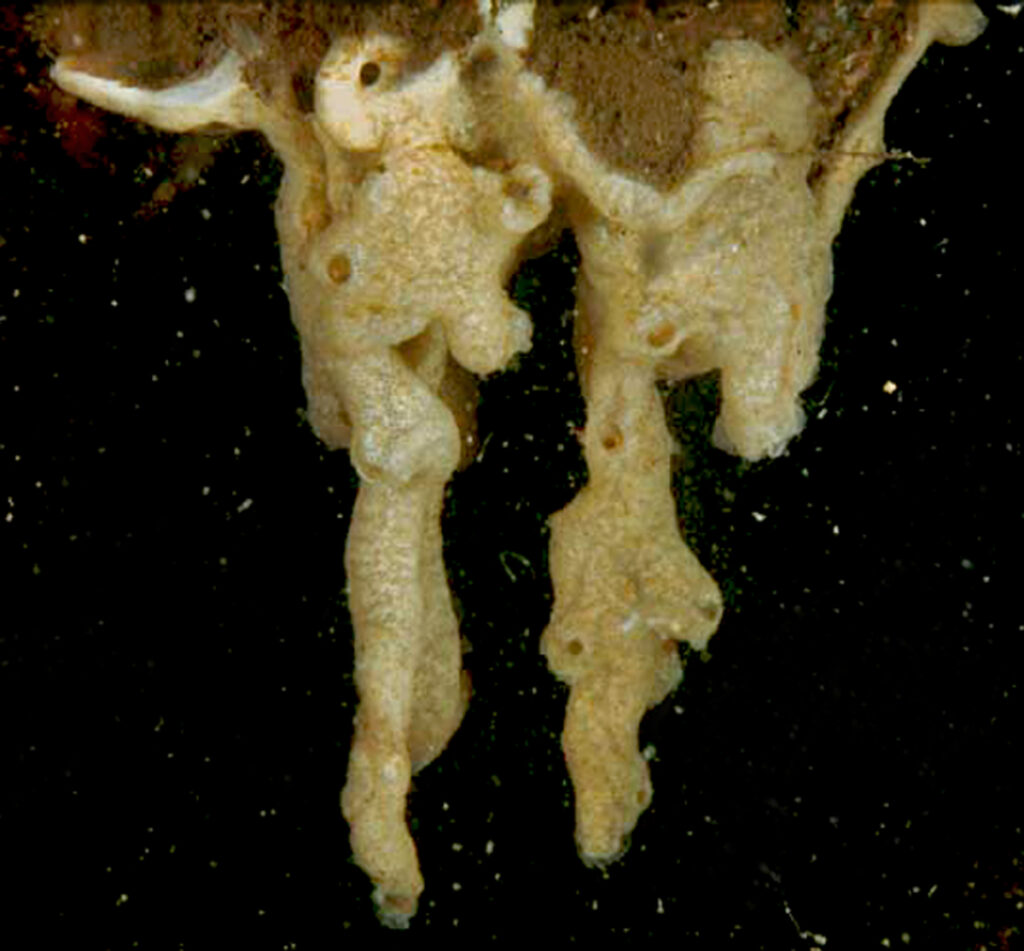The carpet sea squirt
Didemnum vexillum
Also known as: compound sea squirt, dripping sea squirt
What does it look like?
Didemnum vexillum is a colonial sea squirt, whitish-yellow in colour. The colonies form large sheets and lobes that can cover the bottom and everything on it. Each of the separate individuals (zooids) in the colony can be identified by a small hole (“inhalant siphon”) that closes when touched.
Distinguishing features
Colonial ascidians can be distinguished from similar looking sponges, by the fact that ascidians have muscles and sponges do not. As a result, if a colonial ascidian is disturbed, it will close the openings in the colony, while no movement is seen in sponges.
In general D. vexillum can be distinguished from native white didemnid species by being abundantly present in a region. Most native species are relatively rare, while D. vexillum colonies are generally found in much higher densities, i.e. various colonies can be found close together.
On more detailed examination, colonial ascidians like Didemnum have large numbers of similarly sized more or less circular openings, while most of the openings present in a sponge tend to be smaller, irregular and vary strongly in size and form. To distinguish Didemnum from other whitish colonial ascidian species one may have to look through a microscope at a piece of the colony at the calcareous spicules it has inside. These are little ball like structures with spikes in all directions.
Confusion with similar species
Didemnum vexillum can be confused with other native Didemnid species and some sponges. Unlike other colonial sea squirts, Didemnum vexillum does not usually have black /brown markings on its surface. It also tends to be locally more abundant and occur in higher densities than other didemnid species. Compared with sponges, Didemnum have large numbers of similarly sized almost circular openings, while most of the openings present in a sponge tend to be smaller, irregular and vary strongly in size and form.
What is its origin?
Northwest Pacific
Habitat
This is a fouling species that can inhabit hard natural and artificial substrates, from cobble and gravel, to shellfish beds and floating pontoons. In more sheltered areas the species can grow over sandy and muddy bottoms. It lives mainly in submerged habitats and can be very abundant on marina pontoons, boat hulls and other marine floating structures like those used for mussel rope culture. The species can withstand short periods above water, e.g. just above the low water line, although it does not survive being exposed to fresh water (rain) very well. This enables it to settle on the underside of oyster trestles, but not on top of them if located in the higher intertidal zone.
Presence in Ireland
Present on the island of Ireland
Behaviour and Spread
Didemnum vexillum colonies produce larvae with a relatively short pelagic stage of a few hours to days in spring. The colonies can rapidly expand in summer time and only partly die off in winter. Spread by natural dispersal occurs mainly by fragments that break of the relatively fragile colonies. These fragments may drift over large distances with the residual sea-currents. Anthropogenic vectors mainly concern hull fouling and shellfish transports over relatively short distances as the species cannot survive being above water for too long.
Potential nuisance for aquaculture
Didemnum vexillum can cause a nuisance to mussel and oyster farmers as it can cover mussel lines, shellfish growing on the bottom and oyster trestles, bags and cages. By doing so, water (and nutrient) flow to the shellfish is decreased, possibly resulting in a lower shellfish meat contents. In addition D. vexillum colonies may strongly reduce the settlement success of the shellfish spat, when covering large parts of the bottom.
Key Management Actions
- Removing colonies in summer time may result in fragmenting colonies that will drift around and regenerate, and may induce larval release. Trying to actively remove colonies in summer time may therefor increase the problem. Therefore eradication efforts by physical removal should always be conducted in winter time, because Didemnum vexillum colonies will not be able to regenerate at that time, and no larvae will be present in the colonies.
- If the undersides of bags with oysters are covered with D. vexillum colonies, it is best to turn them over just before heavy rainfall is expected. Vinegar spray has also been proven effective.
- When transporting shellfish from one bay to another, one may dip bags with oysters for several minutes in a basin with fresh water. By doing so most if not all, Didemnum colonies that may be present, will die. Even if the water in this basin becomes slightly brackish, Didemnum colonies will be effectively killed without harming the oysters.

